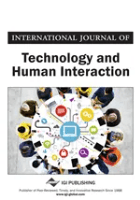
International Journal of Technology and Human Interaction
Scope & Guideline
Exploring the Nexus of Technology and Human Experience
Introduction
Aims and Scopes
- Human-Technology Interaction:
The journal emphasizes the study of how individuals interact with technology, including user acceptance, usability, and user experience across various platforms and devices. - Impact of Technology on Work and Learning:
Research frequently addresses the implications of technology on work performance, mental health, and learning outcomes, reflecting the journal's commitment to understanding how digital tools affect productivity and education. - Social Media and Digital Communication:
The journal explores themes surrounding social media usage, its effects on communication, and the dynamics of online interactions, particularly during significant events such as the COVID-19 pandemic. - Adoption of Emerging Technologies:
A core area of research includes the acceptance and adoption of new technologies, such as AI, IoT, and e-learning platforms, focusing on factors that influence user intentions and behaviors. - Behavioral and Psychological Aspects of Technology Use:
The journal investigates the psychological impacts of technology, including issues like technology-induced stress, addiction, and the implications of digital interfaces on user behavior.
Trending and Emerging
- AI and Machine Learning Applications:
Recent publications increasingly explore the applications of AI and machine learning in various domains, such as education, marketing, and social media, highlighting the growing relevance of these technologies in everyday life. - Mental Health and Technology:
There is a rising interest in the relationship between technology use and mental health, particularly concerning work-related stress and the psychological impacts of digital communication. - User Experience Research:
A significant trend is the focus on enhancing user experience (UX) through empirical studies, evaluating the usability of interfaces and the impact of design choices on user satisfaction. - E-learning and Remote Education:
The journal has seen a surge in research related to e-learning and remote education, especially in the context of the pandemic, addressing the effectiveness and challenges of digital learning environments. - Social Media Dynamics:
Emerging themes include the analysis of social media behaviors, particularly how user characteristics influence engagement and communication patterns, reflecting the growing importance of digital social interactions.
Declining or Waning
- Traditional Marketing Strategies:
There has been a noticeable decrease in studies focusing on conventional marketing strategies, as the journal shifts towards more digitally-centered marketing practices, particularly in social media and e-commerce. - Basic Information Technology Training:
Research on fundamental IT training or literacy programs has diminished, potentially due to the increasing assumption that users possess baseline technology skills, shifting focus to more advanced applications. - Static Uses of Technology in Education:
Papers that previously examined static or traditional educational technology implementations are less frequent, as the emphasis now leans towards dynamic, interactive learning environments and blended approaches.
Similar Journals

USER MODELING AND USER-ADAPTED INTERACTION
Transforming Education Through User-Adaptive InsightsUSER MODELING AND USER-ADAPTED INTERACTION, published by SPRINGER, stands as a pivotal journal within the realms of Computer Science Applications, Education, and Human-Computer Interaction. With an ISSN of 0924-1868 and an E-ISSN of 1573-1391, this journal has established a reputable presence since its inception in 1991, continuing to contribute to the scholarly discourse through 2024. With an impressive impact factor reflective of its high visibility, it is ranked in the top quartiles, notably Q1 in both Computer Science Applications and Education, and Q2 in Human-Computer Interaction as of 2023. This positions the journal within the 95th percentile in Social Sciences Education and the 81st percentile in Human-Computer Interaction. As it encompasses a broad scope that integrates user modeling techniques with adaptive interaction strategies, the journal caters to the needs of researchers, professionals, and students keen on advancing knowledge in adaptive technology, educational tools, and user-centric design. While not currently open access, it remains a valuable resource for anyone interested in the intersection of user experience and technological adaptation.

Computers in Human Behavior Reports
Exploring the dynamic interplay of technology and psychology.Computers in Human Behavior Reports, published by ELSEVIER, is a distinguished open-access journal dedicated to advancing interdisciplinary research at the intersection of technology and human behavior. Since its inception in 2020, the journal has quickly gained a prominent position in the academic field, attaining Q1 category rankings in multiple areas including Applied Psychology, Artificial Intelligence, Cognitive Neuroscience, Human-Computer Interaction, and Neuroscience (miscellaneous). Its robust standing is evidenced by its exceptional Scopus ranks, particularly in Neuroscience—where it is positioned 4th out of 49 journals—demonstrating a high level of influence and engagement within the community. The journal's aim is to disseminate cutting-edge research findings and foster dialogue among researchers, professionals, and students alike, thereby addressing crucial questions regarding the impact of technology on human behavior and vice versa. As an open-access publication based in the United Kingdom, it not only enhances the visibility of research but also ensures wider accessibility to groundbreaking insights that shape our understanding of human-machine interactions.
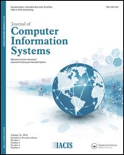
JOURNAL OF COMPUTER INFORMATION SYSTEMS
Exploring the Future of Computer Science and EducationThe JOURNAL OF COMPUTER INFORMATION SYSTEMS, published by Taylor & Francis Inc, is a prestigious academic journal dedicated to the fields of computer science and information systems. With an ISSN of 0887-4417 and an E-ISSN of 2380-2057, this journal has been a valuable resource since its inception in 1995, contributing to the convergence of research until 2024. The journal holds significant status in its respective categories, achieving a Q2 ranking in Computer Networks and Communications, and a Q1 ranking in Education, demonstrating its impact and relevance to a broad academic audience. With Scopus rankings placing it in the 90th percentile for Social Sciences - Education and respectable standings in Computer Science, it serves as a critical forum for the dissemination of innovative research, methodologies, and case studies within the domains of computer information systems. Although not an open-access journal, it remains a highly cited source, attracting researchers, educators, and professionals seeking to enhance their knowledge and contribute to the evolving discourse in technology and education.
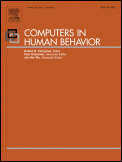
COMPUTERS IN HUMAN BEHAVIOR
Bridging the Gap Between Computing and Human BehaviorCOMPUTERS IN HUMAN BEHAVIOR, published by Pergamon-Elsevier Science Ltd, stands as a premier journal in the interdisciplinary domain of human interactions with computing technologies. With a substantial impact factor and consistently ranking in the Q1 category across multiple fields—including Arts and Humanities, Human-Computer Interaction, and Psychology—this journal addresses crucial insights into how technology shapes human behavior and social interactions. Since its inception in 1985, it has evolved to encompass a breadth of studies that investigate emerging trends and challenges in digital environments, making it an essential resource for researchers, professionals, and students dedicated to advancing knowledge in this dynamic field. The journal, identified by its ISSN 0747-5632 and E-ISSN 1873-7692, is available for exploration through traditional access methods. With a focus on fostering scholarly discourse, COMPUTERS IN HUMAN BEHAVIOR continues to contribute significantly to the understanding of the increasingly complex relationships between humans and machines.

KSII Transactions on Internet and Information Systems
Unveiling Insights in the Evolving Digital Landscape.KSII Transactions on Internet and Information Systems is a leading academic journal dedicated to advancing the fields of Internet technology and information systems. Published by the KSII-Kor Soc Internet Information, this journal has established itself as a significant contributor to research since its inception in 2007, with a focus on innovative solutions and methodologies in computer networks and communications as well as information systems. With a Category Quartile of Q3 in both fields for 2023, it ranks in the 44th percentile among its peers according to Scopus, making it a reputable platform for authors to share their findings. While available in print, the journal also promotes open access, ensuring broad dissemination of research findings. The editorial team is committed to maintaining high scholarly standards and relevance, inviting contributions from researchers, professionals, and students eager to push the boundaries of knowledge in today's rapidly evolving digital landscape. For those engaged in or studying these dynamic fields, the KSII Transactions on Internet and Information Systems remains an invaluable resource for cutting-edge research.
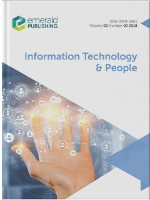
Information Technology & People
Unveiling the human side of information technology.Information Technology & People is a renowned academic journal published by Emerald Group Publishing Ltd, dedicated to advancing insights in the intersection of technology, organizational context, and human behavior. Established in 1990, the journal has extensively contributed to the field of Computer Science Applications, Information Systems, and Library and Information Sciences, reflecting top-tier research as evidenced by its Q1 quartile ranking in 2023 across these categories. With a notable Scopus ranking, including a percentile of 91st in Library and Information Sciences, it serves as an essential resource for researchers, professionals, and students eager to explore contemporary issues and innovations in the deployment and impact of information technology on society. While not operating under an open access model, the journal provides a gateway to pivotal studies and findings that shape the future of IT and its implications for people and organizations. Located in the United Kingdom, Information Technology & People continues to be a vital platform for disseminating cutting-edge research that bridges the gap between technology and human experience.
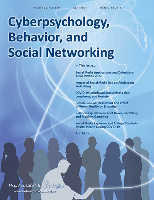
Cyberpsychology Behavior and Social Networking
Transforming Perspectives on Online EngagementCyberpsychology Behavior and Social Networking is a leading international journal dedicated to the exploration of the intricate relationship between psychology and digital interactions. Published by Mary Ann Liebert, Inc, this esteemed journal boasts a strong impact factor, reflecting its significance in the fields of psychology, communication, and computer science. With a broad scope encompassing topics such as social networking, online behavior, and human-computer interaction, the journal aims to provide a vital platform for researchers, professionals, and students to share innovative research and insights. Recognized as a Q1 journal across multiple categories, including Applied Psychology and Human-Computer Interaction, it ranks impressively among its peers, underscoring its influence in advancing academic discourse. Additionally, the journal offers open access options, enhancing the visibility and accessibility of published work to a diverse audience. As digital technologies continue to evolve, Cyberpsychology Behavior and Social Networking remains at the forefront, fostering scholarly dialogue that navigates the psychological ramifications of our increasingly interconnected digital lives.
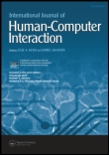
INTERNATIONAL JOURNAL OF HUMAN-COMPUTER INTERACTION
Transforming User Experiences Through ResearchINTERNATIONAL JOURNAL OF HUMAN-COMPUTER INTERACTION, published by Taylor & Francis Inc, stands at the forefront of research within the interdisciplinary fields of human-computer interaction, human factors, and ergonomics. Since its establishment, the journal has consistently contributed to advancing the understanding of the interactions between people and computers, making it a vital resource for researchers, professionals, and students alike. With an impressive impact factor reflecting its high citation rate, this journal is recognized as a Q1 publication in both Computer Science Applications and Human Factors and Ergonomics categories for 2023, showcasing its stature within the academic community. Additionally, it boasts a commendable ranking within the top percentiles in key areas on Scopus, ensuring that the research published here reaches broad scholarly audiences. Available in traditional subscription format, the journal covers seminal studies from 1989 to 2024, reflecting ongoing innovation in technology and its applications in everyday life, and thus serves as an essential platform for pioneering research that shapes the future of user experience.

Universal Access in the Information Society
Empowering voices through accessible information systems.Universal Access in the Information Society is a distinguished academic journal published by SPRINGER HEIDELBERG, focusing on the critical fields of computer networks, human-computer interaction, information systems, and software. Established in 2003, this periodical aims to disseminate innovative research that tackles the challenges of universal access to information and communication technologies, making it a vital resource for researchers, professionals, and students dedicated to enhancing digital inclusivity. With a commendable impact reflected in its Scopus rankings, it places in the second quartile for Computer Networks and Communications and Information Systems, as well as in the third quartile for Human-Computer Interaction, verifying its pivotal role in advancing knowledge within these domains. Although currently not open access, the journal offers comprehensive insights that are essential for anyone looking to contribute to or comprehend the evolving landscape of information societal access. The journal's commitment to bridging knowledge gaps makes it indispensable for both academic and practical applications in the Information Society.
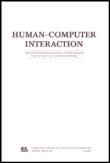
HUMAN-COMPUTER INTERACTION
Fostering Collaboration Between Humans and MachinesHUMAN-COMPUTER INTERACTION is a premier academic journal published by Taylor & Francis Inc, dedicated to the interdisciplinary field of HCI, which explores the dynamic interactions between humans and computers. With its ISSN 0737-0024 and E-ISSN 1532-7051, the journal maintains a strong presence within the academic community and is recognized for its significant impact, holding a commendable impact factor that underscores its relevance. Ranked in the Q1 category for both Applied Psychology and Human-Computer Interaction, it occupies a critical position in Scopus rankings, listed as #15 in Applied Psychology and #11 in Computer Science, Human-Computer Interaction, placing it in the top 6% of relevant fields. Covering a broad spectrum of topics from usability studies to user experience design, the journal aims to facilitate innovative research and provide insights that bridge theoretical frameworks and practical applications. Published since 1985 and continuously evolving, HUMAN-COMPUTER INTERACTION remains an essential resource for researchers, professionals, and students eager to contribute to and benefit from advances in understanding how technology can effectively serve human needs.